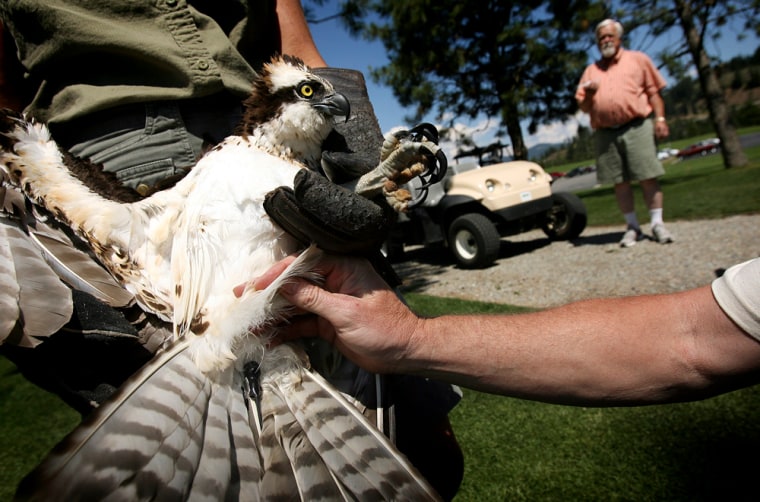Independence Day arrived a day early for a female osprey caught at a golf course after becoming entangled in fishing line and swallowing a fishing hook.
Biologists at the Raptor Chapter nursed the 4-pound osprey back to health and implanted feathers from dead birds so it could fly again.
On Monday, that's what it did.
"Talk about an Independence Day for this bird," said Jane Cantwell, a biologist with the Raptor Chapter, which helps rehabilitate injured birds of prey. "She certainly would have perished."
Cantwell said the osprey could have offspring in the area and it was important to get the bird back in the wild.
She said the osprey will pass the fish hook naturally, noting that anglers should dispose of fishing line and hooks properly. A transmitter was attached to the osprey so that Cantwell and others can keep track of its progress.
"What we really want to know is if she went back to her nest," Cantwell said. "And if she gets into trouble we can find her."
Workers at The Resort Golf Course captured the bird May 15 after finding it injured. Kevin Hicks, golf course superintendent, said one worker distracted it while another put a coat over it.
"Somehow my guys wrangled her into a dog cage, of all things," Hick said. "It's a beautiful bird — nice to see, though, not under the best circumstances."
From there, it received help from volunteers who took the osprey to the Rathdrum Animal Clinic, which provided free radiographs. At least three wildlife biologists donated medical assistance.
"These birds don't have any health care, so it's donated time," Cantwell said. "She would have died without their intervention."
